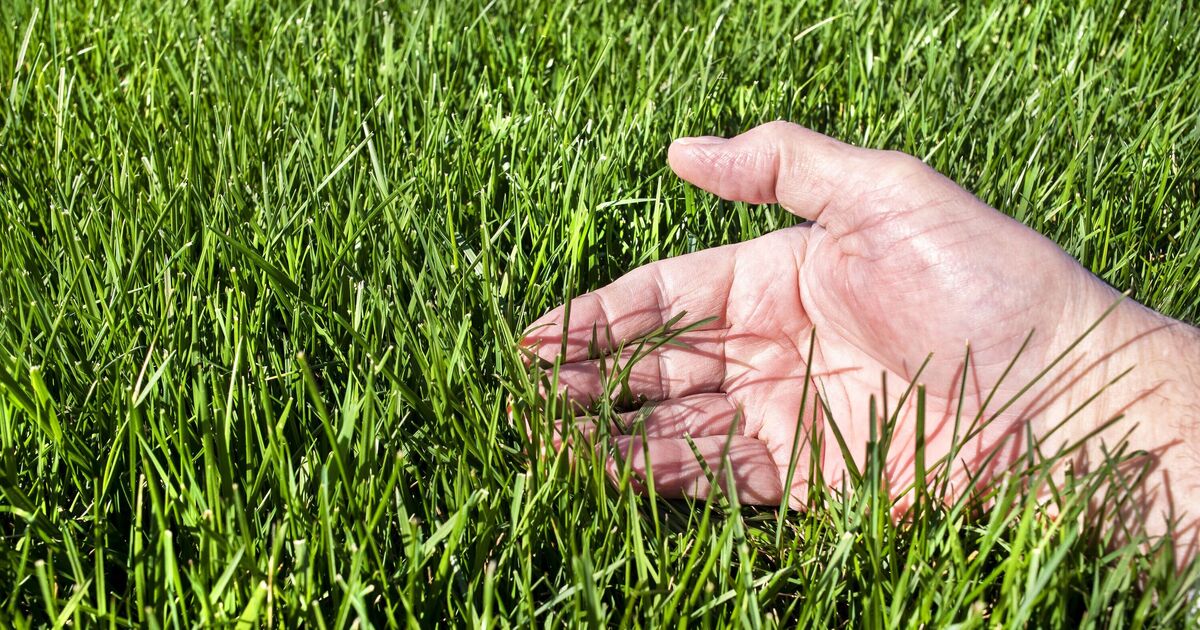Lawn maintenance can be a challenging part of gardening, especially if you’re after green lush growth. However, with the right fertiliser, you can ensure your grass stays healthy and vibrant.
As we approach September, it’s crucial to feed your lawn with essential nutrients such as nitrogen, potassium, and phosphorus to encourage robust growth for the autumn months.
Andrew Huber, a lawncare expert from The Lawn Squad, has revealed that the best way to prepare your grass for a “lush, deep green lawn” without breaking the bank is by creating a homemade DIY fertiliser.
He stated: “Fertiliser is not just about making your grass grow it’s about nurturing a landscape that can withstand the tests of nature and time. A robust lawn is your first defence against pests, diseases, and environmental stresses.”
The secret to an effective lawn fertiliser lies in ensuring it contains the nutrients nitrogen, potassium and phosphorus, all of which are vital for maintaining a healthy lawn.
One of the best ways to reduce food waste and save money is to repurpose your kitchen scraps into fertiliser.
Andrew stated: “Turning kitchen scraps and yard waste into composted material is both eco-friendly and garden-smart. It’s an excellent way to reduce waste and benefit your lawn.”
Banana peels, rich in potassium and phosphorus, make a fantastic addition to your fertiliser.
Fish scraps and vegetable peels such as potatoes or carrot scraps also contain phosphorus and will easily decompose on a lawn.
However, one of the best sources of nitrogen for lawns is coffee grounds, as a balanced amount of nitrogen will help promote grass growth. Andrew remarked: “Coffee isn’t just my morning essential, it’s also great for my lawn.
“Nitrogen-rich coffee grounds can be sprinkled on the lawn or mixed with water (about half a pound of coffee grounds to five gallons of water) to create a nutrient-packed lawn tonic.”
There are many kitchen scraps which can aid your lawn and you will discover what works best through experimentation.
Once you have the ingredients, all you need to do is set them aside, mix them together in water and leave them alone to break down properly then use them to feed your lawn.
When applying this ingredient, ensure to mow your lawn a few days before fertilising and water the lawn as it will allow it to absorb nutrients better.
Next, check the weather forecast to make sure there is no heavy rain that day which could wash away the fertiliser after application.
Once you’ve whipped up your own DIY fertiliser, it’s essential to have the proper kit to distribute it across your lawn, and Andrew swears by a backpack sprayer for the job.
Give your grass a good spray, making sure to stride back and forth for an even spread, then follow up with a light watering to help the fertiliser seep into the soil.
Keep tabs on your turf afterwards to avoid overloading or skimping on any particular nutrient, and you’ll be on track for a more luxuriant, verdant lawn before you know it.
Andrew emphasised: “Monitoring your lawn’s response is crucial for determining the effectiveness of your DIY fertiliser.
“I always keep a close eye on grass growth and colour changes. Additionally, conducting a soil test before starting my fertilisation regime ensures that I’m not overdoing or underdoing certain nutrients.”





